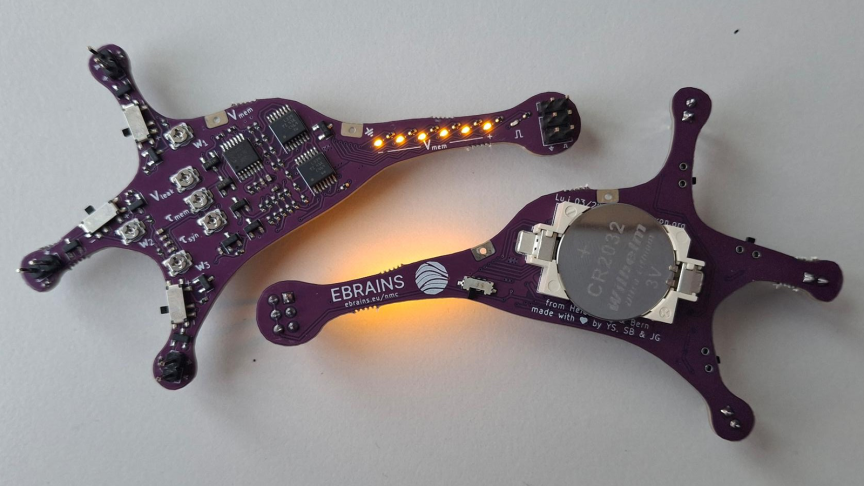Neuromorphic Computing
Simulate or emulate spiking neural networks with neuromorphic computing systems.
- Free, remote access to fast, powerful, programmable, brain-inspired computing devices
- Access to two complementary, large-scale, custom-hardware neuromorphic computing systems: BrainScaleS (located in Heidelberg) and SpiNNaker (located in Manchester)
- Enables high-speed, low-energy simulations or emulations of simplified spiking neural networks with synaptic plasticity
- PyNN API for simulator-independent specification of neuronal network models
BrainScaleS
The BrainScaleS system is based on physical (analogue or mixed signal) emulations of neuron, synapse and plasticity models with digital connectivity, running up to ten thousand times faster than real time.
SpiNNaker
The SpiNNaker system is based on numerical models running in real time on custom digital multicore chips using the ARM architecture.
What can I do with the EBRAINS neuromorphic computing systems?
You can simulate or emulate spiking neural networks on either of the two EBRAINS neuromorphic computing systems SpiNNaker and BrainScaleS.
Models and simulation experiments can be described in a Python script using the PyNN API and submitted either through the EBRAINS Collaboratory website or via our web API (python client available).
Results can be viewed via browser and downloaded as data files for analysis, making use e.g. of the data analysis capabilities EBRAINS offers.
For real time SpiNNaker simulations, direct use in a neurorobotics simulated environment is also possible.
Who can use the EBRAINS neuromorphic computing systems?
The neuromorphic computing systems should interest researchers in multiple fields, including computational neuroscience and machine learning. Platform users are able to study network implementations of their choice, including simplified versions of brain models developed by use of the EBRAINS Simulation services or generic circuit models based on theoretical work.
The platform also allows industry researchers and technology developers to experiment with and test applications based on state-of-the-art neuromorphic devices and systems. Neuromorphic systems can offer higher speed (real-time or accelerated) and lower energy consumption than traditional HPC resources.
The accelerated systems are particularly suited for investigation of plasticity and learning, enabling simulation of hours or days of biological time in only seconds or minutes.

The LU.I Neuron Demonstrator
"Lu.i" a printed circuit board (PCB), which features a configurable, fully analog implementation of the leaky integrate-and-fire neuron model for teaching and demonstration purposes.
Create an account
EBRAINS is open and free. Sign up now for complete access to our tools and services.